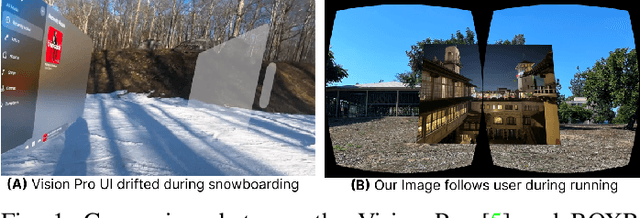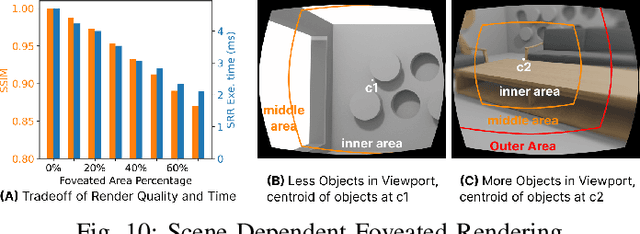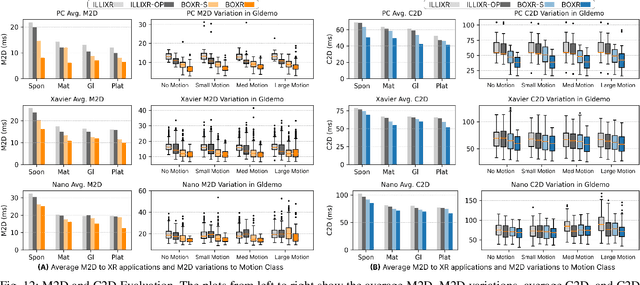Zexin Li
Collaborative Learning in Agentic Systems: A Collective AI is Greater Than the Sum of Its Parts
Jun 05, 2025Abstract:Agentic AI has gained significant interest as a research paradigm focused on autonomy, self-directed learning, and long-term reliability of decision making. Real-world agentic systems operate in decentralized settings on a large set of tasks or data distributions with constraints such as limited bandwidth, asynchronous execution, and the absence of a centralized model or even common objectives. We posit that exploiting previously learned skills, task similarities, and communication capabilities in a collective of agentic AI are challenging but essential elements to enabling scalability, open-endedness, and beneficial collaborative learning dynamics. In this paper, we introduce Modular Sharing and Composition in Collective Learning (MOSAIC), an agentic algorithm that allows multiple agents to independently solve different tasks while also identifying, sharing, and reusing useful machine-learned knowledge, without coordination, synchronization, or centralized control. MOSAIC combines three mechanisms: (1) modular policy composition via neural network masks, (2) cosine similarity estimation using Wasserstein embeddings for knowledge selection, and (3) asynchronous communication and policy integration. Results on a set of RL benchmarks show that MOSAIC has a greater sample efficiency than isolated learners, i.e., it learns significantly faster, and in some cases, finds solutions to tasks that cannot be solved by isolated learners. The collaborative learning and sharing dynamics are also observed to result in the emergence of ideal curricula of tasks, from easy to hard. These findings support the case for collaborative learning in agentic systems to achieve better and continuously evolving performance both at the individual and collective levels.
Mixtraining: A Better Trade-Off Between Compute and Performance
Feb 26, 2025Abstract:Incorporating self-supervised learning (SSL) before standard supervised learning (SL) has become a widely used strategy to enhance model performance, particularly in data-limited scenarios. However, this approach introduces a trade-off between computation and performance: while SSL helps with representation learning, it requires a separate, often time-consuming training phase, increasing computational overhead and limiting efficiency in resource-constrained settings. To address these challenges, we propose MixTraining, a novel framework that interleaves several SSL and SL epochs within a unified mixtraining training phase, featuring a smooth transition between two learning objectives. MixTraining enhances synergy between SSL and SL for improved accuracy and consolidates shared computation steps to reduce computation overhead. MixTraining is versatile and applicable to both single-task and multi-task learning scenarios. Extensive experiments demonstrate that MixTraining offers a superior compute-performance trade-off compared to conventional pipelines, achieving an 8.81% absolute accuracy gain (18.89% relative accuracy gain) on the TinyImageNet dataset while accelerating training by up to 1.29x with the ViT-Tiny model.
Recent Advances in Large Langauge Model Benchmarks against Data Contamination: From Static to Dynamic Evaluation
Feb 23, 2025Abstract:Data contamination has received increasing attention in the era of large language models (LLMs) due to their reliance on vast Internet-derived training corpora. To mitigate the risk of potential data contamination, LLM benchmarking has undergone a transformation from static to dynamic benchmarking. In this work, we conduct an in-depth analysis of existing static to dynamic benchmarking methods aimed at reducing data contamination risks. We first examine methods that enhance static benchmarks and identify their inherent limitations. We then highlight a critical gap-the lack of standardized criteria for evaluating dynamic benchmarks. Based on this observation, we propose a series of optimal design principles for dynamic benchmarking and analyze the limitations of existing dynamic benchmarks. This survey provides a concise yet comprehensive overview of recent advancements in data contamination research, offering valuable insights and a clear guide for future research efforts. We maintain a GitHub repository to continuously collect both static and dynamic benchmarking methods for LLMs. The repository can be found at this link.
Bridging the Editing Gap in LLMs: FineEdit for Precise and Targeted Text Modifications
Feb 19, 2025Abstract:Large Language Models (LLMs) have transformed natural language processing, yet they still struggle with direct text editing tasks that demand precise, context-aware modifications. While models like ChatGPT excel in text generation and analysis, their editing abilities often fall short, addressing only superficial issues rather than deeper structural or logical inconsistencies. In this work, we introduce a dual approach to enhance LLMs editing performance. First, we present InstrEditBench, a high-quality benchmark dataset comprising over 20,000 structured editing tasks spanning Wiki articles, LaTeX documents, code, and database Domain-specific Languages (DSL). InstrEditBench is generated using an innovative automated workflow that accurately identifies and evaluates targeted edits, ensuring that modifications adhere strictly to specified instructions without altering unrelated content. Second, we propose FineEdit, a specialized model trained on this curated benchmark. Experimental results demonstrate that FineEdit achieves significant improvements around {10\%} compared with Gemini on direct editing tasks, convincingly validating its effectiveness.
Transferable Adversarial Attacks against ASR
Nov 14, 2024


Abstract:Given the extensive research and real-world applications of automatic speech recognition (ASR), ensuring the robustness of ASR models against minor input perturbations becomes a crucial consideration for maintaining their effectiveness in real-time scenarios. Previous explorations into ASR model robustness have predominantly revolved around evaluating accuracy on white-box settings with full access to ASR models. Nevertheless, full ASR model details are often not available in real-world applications. Therefore, evaluating the robustness of black-box ASR models is essential for a comprehensive understanding of ASR model resilience. In this regard, we thoroughly study the vulnerability of practical black-box attacks in cutting-edge ASR models and propose to employ two advanced time-domain-based transferable attacks alongside our differentiable feature extractor. We also propose a speech-aware gradient optimization approach (SAGO) for ASR, which forces mistranscription with minimal impact on human imperceptibility through voice activity detection rule and a speech-aware gradient-oriented optimizer. Our comprehensive experimental results reveal performance enhancements compared to baseline approaches across five models on two databases.
BOXR: Body and head motion Optimization framework for eXtended Reality
Oct 16, 2024



Abstract:The emergence of standalone XR systems has enhanced user mobility, accommodating both subtle, frequent head motions and substantial, less frequent body motions. However, the pervasively used M2D latency metric, which measures the delay between the most recent motion and its corresponding display update, only accounts for head motions. This oversight can leave users prone to motion sickness if significant body motion is involved. Although existing methods optimize M2D latency through asynchronous task scheduling and reprojection methods, they introduce challenges like resource contention between tasks and outdated pose data. These challenges are further complicated by user motion dynamics and scene changes during runtime. To address these issues, we for the first time introduce the C2D latency metric, which captures the delay caused by body motions, and present BOXR, a framework designed to co-optimize both body and head motion delays within an XR system. BOXR enhances the coordination between M2D and C2D latencies by efficiently scheduling tasks to avoid contentions while maintaining an up-to-date pose in the output frame. Moreover, BOXR incorporates a motion-driven visual inertial odometer to adjust to user motion dynamics and employs scene-dependent foveated rendering to manage changes in the scene effectively. Our evaluations show that BOXR significantly outperforms state-of-the-art solutions in 11 EuRoC MAV datasets across 4 XR applications across 3 hardware platforms. In controlled motion and scene settings, BOXR reduces M2D and C2D latencies by up to 63% and 27%, respectively and increases frame rate by up to 43%. In practical deployments, BOXR achieves substantial reductions in real-world scenarios up to 42% in M2D latency and 31% in C2D latency while maintaining remarkably low miss rates of only 1.6% for M2D requirements and 1.0% for C2D requirements.
AV-GAN: Attention-Based Varifocal Generative Adversarial Network for Uneven Medical Image Translation
Apr 16, 2024Abstract:Different types of staining highlight different structures in organs, thereby assisting in diagnosis. However, due to the impossibility of repeated staining, we cannot obtain different types of stained slides of the same tissue area. Translating the slide that is easy to obtain (e.g., H&E) to slides of staining types difficult to obtain (e.g., MT, PAS) is a promising way to solve this problem. However, some regions are closely connected to other regions, and to maintain this connection, they often have complex structures and are difficult to translate, which may lead to wrong translations. In this paper, we propose the Attention-Based Varifocal Generative Adversarial Network (AV-GAN), which solves multiple problems in pathologic image translation tasks, such as uneven translation difficulty in different regions, mutual interference of multiple resolution information, and nuclear deformation. Specifically, we develop an Attention-Based Key Region Selection Module, which can attend to regions with higher translation difficulty. We then develop a Varifocal Module to translate these regions at multiple resolutions. Experimental results show that our proposed AV-GAN outperforms existing image translation methods with two virtual kidney tissue staining tasks and improves FID values by 15.9 and 4.16 respectively in the H&E-MT and H&E-PAS tasks.
Genie: Smart ROS-based Caching for Connected Autonomous Robots
Feb 29, 2024Abstract:Despite the promising future of autonomous robots, several key issues currently remain that can lead to compromised performance and safety. One such issue is latency, where we find that even the latest embedded platforms from NVIDIA fail to execute intelligence tasks (e.g., object detection) of autonomous vehicles in a real-time fashion. One remedy to this problem is the promising paradigm of edge computing. Through collaboration with our industry partner, we identify key prohibitive limitations of the current edge mindset: (1) servers are not distributed enough and thus, are not close enough to vehicles, (2) current proposed edge solutions do not provide substantially better performance and extra information specific to autonomous vehicles to warrant their cost to the user, and (3) the state-of-the-art solutions are not compatible with popular frameworks used in autonomous systems, particularly the Robot Operating System (ROS). To remedy these issues, we provide Genie, an encapsulation technique that can enable transparent caching in ROS in a non-intrusive way (i.e., without modifying the source code), can build the cache in a distributed manner (in contrast to traditional central caching methods), and can construct a collective three-dimensional object map to provide substantially better latency (even on low-power edge servers) and higher quality data to all vehicles in a certain locality. We fully implement our design on state-of-the-art industry-adopted embedded and edge platforms, using the prominent autonomous driving software Autoware, and find that Genie can enhance the latency of Autoware Vision Detector by 82% on average, enable object reusability 31% of the time on average and as much as 67% for the incoming requests, and boost the confidence in its object map considerably over time.
R^3: On-device Real-Time Deep Reinforcement Learning for Autonomous Robotics
Sep 15, 2023



Abstract:Autonomous robotic systems, like autonomous vehicles and robotic search and rescue, require efficient on-device training for continuous adaptation of Deep Reinforcement Learning (DRL) models in dynamic environments. This research is fundamentally motivated by the need to understand and address the challenges of on-device real-time DRL, which involves balancing timing and algorithm performance under memory constraints, as exposed through our extensive empirical studies. This intricate balance requires co-optimizing two pivotal parameters of DRL training -- batch size and replay buffer size. Configuring these parameters significantly affects timing and algorithm performance, while both (unfortunately) require substantial memory allocation to achieve near-optimal performance. This paper presents R^3, a holistic solution for managing timing, memory, and algorithm performance in on-device real-time DRL training. R^3 employs (i) a deadline-driven feedback loop with dynamic batch sizing for optimizing timing, (ii) efficient memory management to reduce memory footprint and allow larger replay buffer sizes, and (iii) a runtime coordinator guided by heuristic analysis and a runtime profiler for dynamically adjusting memory resource reservations. These components collaboratively tackle the trade-offs in on-device DRL training, improving timing and algorithm performance while minimizing the risk of out-of-memory (OOM) errors. We implemented and evaluated R^3 extensively across various DRL frameworks and benchmarks on three hardware platforms commonly adopted by autonomous robotic systems. Additionally, we integrate R^3 with a popular realistic autonomous car simulator to demonstrate its real-world applicability. Evaluation results show that R^3 achieves efficacy across diverse platforms, ensuring consistent latency performance and timing predictability with minimal overhead.
RT-LM: Uncertainty-Aware Resource Management for Real-Time Inference of Language Models
Sep 12, 2023Abstract:Recent advancements in language models (LMs) have gained substantial attentions on their capability to generate human-like responses. Though exhibiting a promising future for various applications such as conversation AI, these LMs face deployment challenges on various devices due to their extreme computational cost and unpredictable inference latency. Such varied inference latency, identified as a consequence of uncertainty intrinsic to the nature of language, can lead to computational inefficiency and degrade the overall performance of LMs, especially under high-traffic workloads. Unfortunately, the bandwidth of these uncertainty sources is extensive, complicating the prediction of latency and the effects emanating from such uncertainties. To understand and mitigate the impact of uncertainty on real-time response-demanding systems, we take the first step to comprehend, quantify and optimize these uncertainty-induced latency performance variations in LMs. Specifically, we present RT-LM, an uncertainty-aware resource management ecosystem for real-time inference of LMs. RT-LM innovatively quantifies how specific input uncertainties, adversely affect latency, often leading to an increased output length. Exploiting these insights, we devise a lightweight yet effective method to dynamically correlate input text uncertainties with output length at runtime. Utilizing this quantification as a latency heuristic, we integrate the uncertainty information into a system-level scheduler which explores several uncertainty-induced optimization opportunities, including uncertainty-aware prioritization, dynamic consolidation, and strategic CPU offloading. Quantitative experiments across five state-of-the-art LMs on two hardware platforms demonstrates that RT-LM can significantly reduce the average response time and improve throughput while incurring a rather small runtime overhead.
 Add to Chrome
Add to Chrome Add to Firefox
Add to Firefox Add to Edge
Add to Edge